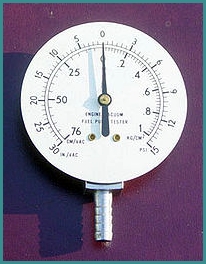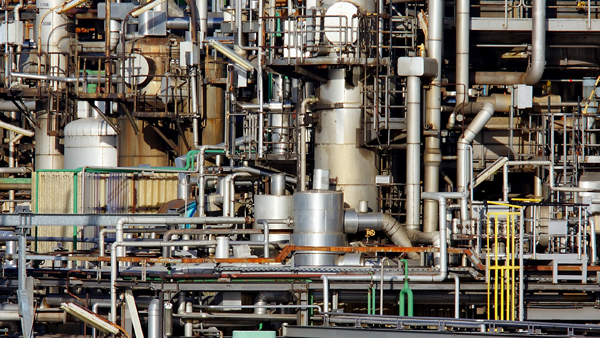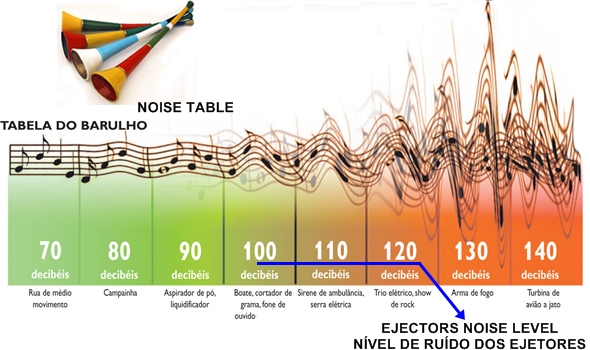How a Pressure Gauge is Manufactured – Como é Fabricado um Manômetro Tipo Bourdon
nov 24 Number of View :7536
Mechanical vacuum gauges
These mechanical vacuum gauges vacuum gauges are simple, robust and cheap, which explains its wide application in industrial processes.
Bourdon Type
These are the mechanical vacuum gauges simpler and cheaper. The Bourdon type vacuum gauges do not measure absolute pressure, but the relative pressure to the local barometric pressure. They are usually round and have a scale of 0 to 30 “Hg or 0 to 760 mm Hg. The heart of this type of vacuum gauge is the Bourdon tube, invented by French engineer Eugene Bourdon, in 1849.
The metal pipe section is elliptical, has thin walls and is generally curved in an arc shape, resembling the letter “C”. The tube is closed at one end and open on the opposite side. The outside of the tube is subject to atmospheric pressure. With the vacuum gauge connected to a system that is under vacuum, the inner tube is evacuated and atmospheric pressure will cause it to curve inward. Increased pressure will produce an opposite effect, with the tube slightly opening to indicate an increase in pressure.
The response to this pressure change is not linear, but with proper design and by adjusting the setting of the pointer, the relationship between hand movement and pressure change can come very close to linear. As a general rule, these vacuum gauges are not very accurate, however there are already some special construction instruments that have excellent accuracy and also provide readings in absolute units.
Common problems with Bourdon type vacuum gauges are: – accumulation of materials from the process within the Bourdon tube; – break or damage of the pointer setting mechanism , due to breakage or vibration of the instrument – conversion error to absolute units, when the atmospheric pressure is taken wrongly.
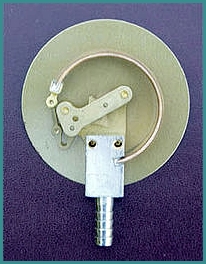 Vacuômetros mecânicos Estes vacuômetros são os mais simples, robustos e baratos, o que justifica sua grande aplicação nos processos industriais.
Vacuômetros mecânicos Estes vacuômetros são os mais simples, robustos e baratos, o que justifica sua grande aplicação nos processos industriais.
Tipo Bourdon
Estes são os vacuômetros mecânicos mais simples e baratos. Os vacuômetros tipo Bourdon não medem pressão absoluta e sim a pressão relativa à pressão barométrica local, são normalmente redondos e possuem escala de 0 a 30″ de Hg ou 0 a 760 mm Hg. O coração deste tipo de vacuômetro é o tubo Bourdon, inventado pelo engenheiro frances Eugene Bourdon, em 1849 .
O tubo de metal tem secção eliptica, paredes finas e geralmente é curvo em forma de arco, lembrando a letra “C”. O tubo é fechado de um lado e aberto do lado oposto. O lado externo ao tubo está sujeito à pressão atmosférica. Com o vacuômetro conectado a um sistema que está sob vácuo, o interior do tubo será evacuado e a pressão ambiente fará com que ele se curve para dentro. O aumento de pressão produzirá um efeito contrário, com o tubo se abrindo levemente para indicar um aumento de pressão.
A resposta a esta mudança de pressão não é linear, mas com um projeto adequado e com o ajuste da fixação do ponteiro, a relação entre o movimento do ponteiro e a alteração de pressão pode se aproximar em muito da linear. Como regra geral, estes vacuômetros não são muito precisos, entretanto já existem alguns instrumentos de construção especial que apresentam excelente precisão e também propiciam leituras em unidades absolutas.
Os problemas comuns com vacuômetros tipo Bourdon são: – acúmulo de materiais vindos do processo dentro do tubo Bourdon; – quebra ou danificação do mecanismo de fixação do ponteiro, devido a quebra ou vibração do instrumento; – erro de conversão para unidades absolutas, quando a pressão atmosférica for tomada erroneamente.
Points to be Considered When Purchasing a Steam Jet Vacuum Pump – Pontos a Serem Considerados na Compra de um Sistema de Vácuo com Ejetores a Vapor
nov 24 Number of View :3945This is one of the best documents about the points to be considered when purchasing a steam jet vacuum pump. The first time I read it was in the far year of 1988, when I joined the GEA Wiegand company to introduce their systems in Brazil. I have no doubt to say 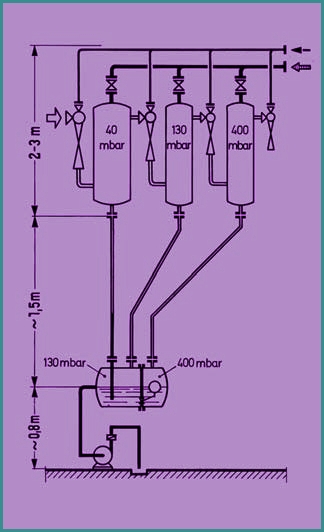 that all the problems we have, regarding the operation of this kind of vacuum systems, are consequence of disregarding at least one of these points. Other major reason for problems is admitting some of these points without checking that information with the customer. As always all the information posted here at the blog applies to any manufacturer of vacuum system.
that all the problems we have, regarding the operation of this kind of vacuum systems, are consequence of disregarding at least one of these points. Other major reason for problems is admitting some of these points without checking that information with the customer. As always all the information posted here at the blog applies to any manufacturer of vacuum system.
Click here to download the pdf file
Clique aqui para abaixar o arquivo em pdf (disponível somente em inglês)
Este é um dos melhores documentos sobre os pontos a serem considerados na compra de um sistema de vácuo com ejetores a vapor. A primeira vez que o li foi no distante ano de 1988, quando comecei a trabalhar na empresa GEA Wiegand para amontar a divisão de vácuo no Brasil. Eu não tenho dúvidas em dizer que todos os problemas que temos, quanto ao funcionamento deste tipo de sistemas de vácuo, são consequência do desrespeito a pelo menos um desses pontos. Outro problema comum é o de se admitir um destes pontos sem verificar esta informação com o cliente. Como sempre, todas as informações postadas aqui no blog se aplicam a qualquer fabricante de sistema de vácuo.
Vacuum System for Hydrocarbon Processing – Sistema de Vácuo para Processamento de Hidrocarbonetos
nov 12 Number of View :4839This nice article from Gary R. Martin written to Hydrocarbon Processing in 1998, talks about the problems in vacuum systems from oil refineries.
Click here to download the article in pdf
Clique aqui para abaixar o artigo em pdf (disponível somente em inglês)
Este ótimo artigo escrito por Gary R. Martin para a revista Hydrocarbon Processing in 1998, fala sobre os problemas encontrados nos sistemas de vácuo de refinarias de petróleo.
Troubleshoot and Optimize Chiller Performance – Localizando Falhas e Otimizando o Desempenho de Resfriadores
nov 08 Number of View :4362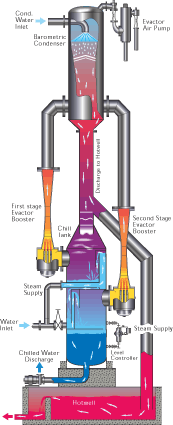 I saw that someone is looking for information about troubleshooting chillers. I am not sure if this will help, once it was not clear the type of chiller. This is another very good article from my friend Guy Levy about chillers under vacuum. This kind of chiller (steam jet ejector water chiller) is normally present at pulp and paper mills.
I saw that someone is looking for information about troubleshooting chillers. I am not sure if this will help, once it was not clear the type of chiller. This is another very good article from my friend Guy Levy about chillers under vacuum. This kind of chiller (steam jet ejector water chiller) is normally present at pulp and paper mills.
Click here to download the article in pdf
Clique aqui para abaixar o artigo em pdf (disponível somente em inglês)
Verifiquei que alguém está procurando informações sobre localização de falhas em resfriadores. Não sei se este artigo vai ajudar, porque não ficou claro o tipo de resfriador, mas é mais um bom texto do meu amigo Guy Levy sobre resfriadores a vácuo. Este tipo de resfriador é muito usado em fábricas de papel e celulose.
Controlling Ejectors Noise – Controlando o Ruído dos Ejetores
nov 05 Number of View :5631My friend Guy Levy wrote this article in 2001, when he was working to Croll-Reynolds. How to control the noise of ejectors is always a question we receive from plant engineers, mainly on those units installed nearby residential sites.
Click here to download the article in pdf
Clique aqui para abaixar o artigo em pdf (disponível somente em inglês)
Este artigo foi escrito em 2001 pelo meu amigo Guy Levy, na época trabalhando na Croll-Reynolds. A pergunta mais comum que recebemos dos engenheiros responsáveis por unidades produtivas instaladas perto de zonas residenciais é como controlar o ruído emitido por ejetores.

